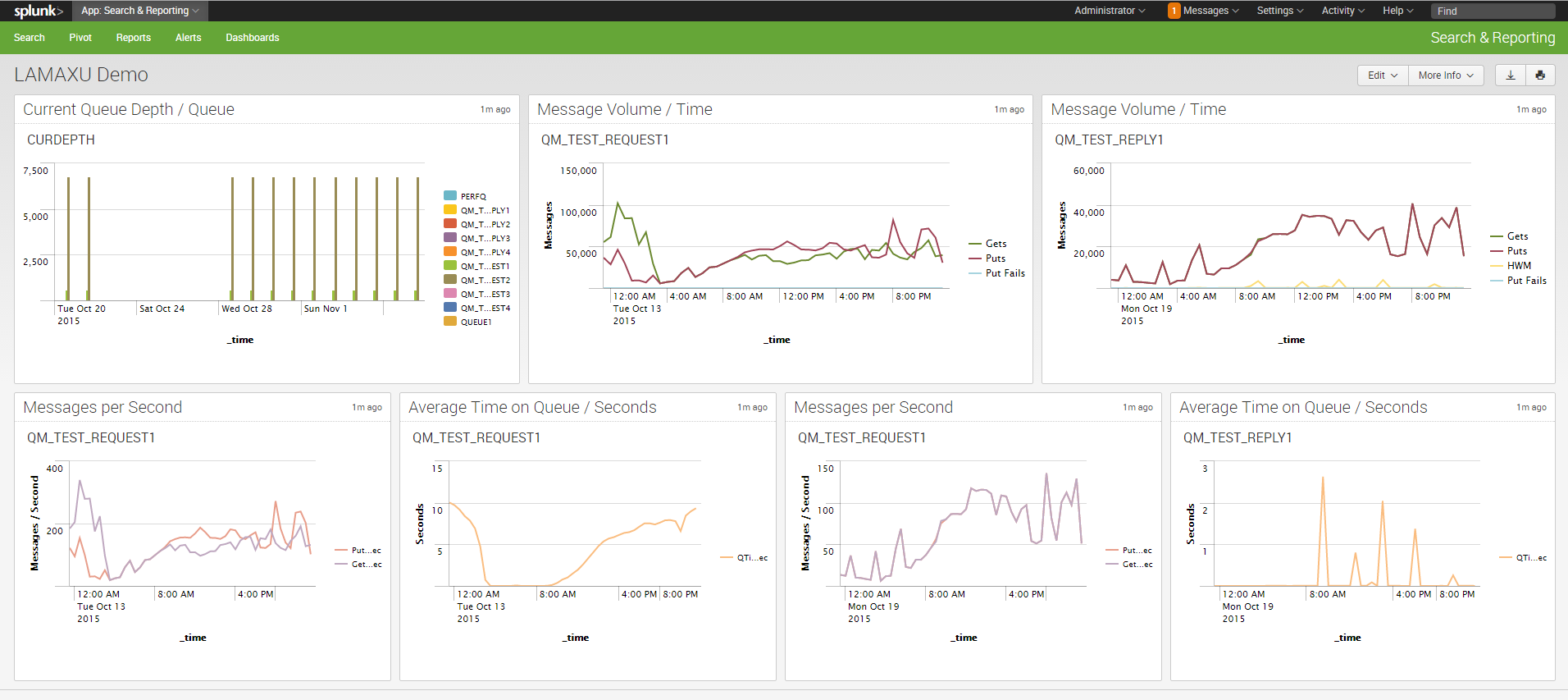

- SPLUNK DASHBOARD INTERVIEW QUESTIONS HOW TO
- SPLUNK DASHBOARD INTERVIEW QUESTIONS PDF
Replication Factor- Associated with both search head clustering and index clustering, replication factor is helpful in determining the number of data copies maintained by an indexer cluster as well as the minimum number of search artifact copies maintained by a search head cluster.The default value of the search factor is 2. Search Factor- Associated with index clustering, Search factor helps in figuring out the number of searchable data copies maintained by the indexing cluster.Search Factor and Replication Factor are functions pertaining to search head clustering and index clustering.

Define the term “Search factor” and “Replication factor”. While scheduled alerts can be chosen from the timing options and are set to search based on the opted timing, real-time alerts search continuously and are triggered whenever there is a search result. You can choose one of the alert types based on your utility. There are two types of alerts available in Splunk, which are scheduled and real-time. What are the types of alerts available in Splunk? This is a useful feature as active live dashboards may not be allowed to be viewed by certain users.ħ.
SPLUNK DASHBOARD INTERVIEW QUESTIONS PDF
Scheduled dashboards- Scheduled dashboards allow you to share them with other team members as they can be downloaded as PDF files. Static real-time dashboards- You can use a static real-time dashboard when you need a large-screen display of the data with indicators and alerts that you can respond to promptly. This type of dashboard is ideal for data analysis and troubleshooting. And based on the selection made and input fields added, such as text boxes, time, dropdowns, etc., you can easily customize the dashboard as well. Dynamic form-based dashboards- In dynamic form-based dashboards, you can make changes to the data on the dashboard without leaving the page. Here are the different types of Splunk dashboards. How many types of dashboards are available in Splunk? Workflow actions are useful for retrieving a specific set of data and sending it to other fields, and it can also be useful in performing drill-down into a specific list with information, such as ID addresses and usernames. Workflow actions are used for automating certain tasks after you have assigned rules and scheduled and created reports. Pivots allow users to create front views of the results, and select the right filter to have a better view of the results. What are pivots and data models in Splunk?ĭata models in Splunk are useful when there is a large amount of unstructured data, which is converted to a structured hierarchical model of the data without running complex search queries. After a certain duration, the data moves from cold to frozen bucket and the data is either deleted or archived.Ĥ. When the warm bucket reaches its maximum limit, the data again moves from the warm bucket to the cold bucket, wherein the oldest data from the warm bucket is first sent to the cold bucket. While you can search for data on a warm bucket, it is not written actively. When Splunk is restarted or when the warm bucket reaches its intended size, the data rolls from hot to the warm bucket. The data in the warm bucket is continuously written and can be actively searched. Upon getting indexed, the data moves into the warm bucket. When data ages, it passes through various buckets, which are hot, warm, cold, frozen, and thawed. Colors can also be assigned by writing certain commands or codes, which allows you to choose colors by opting for hexadecimal values. Followed by this, you can choose the color after modifying the panel's settings. For this, you can go to the dashboard and edit the panels in it. 
While the colors are picked by default in Splunk UI, you can also assign the colors of your choice to charts when creating reports.
SPLUNK DASHBOARD INTERVIEW QUESTIONS HOW TO
How to add the colors in Splunk UI based on the field names? Data Searching Stage- This stage involves various operations, such as accessing, viewing, and using the index data by the user.Ģ.Data Storage Stage- The data is then analyzed to extract relevant data from it in the parsing phase, followed by an indexing phase, which involves writing the parsed events into the index queue.These blocks are then annotated with metadata keys. Data Input Stage- Splunk consumes raw data from various sources and breaks them into 64K blocks.Splunk works in three stages, namely the data input, data storage, and data searching stage, which are elaborated below. Splunk Admin Interview Questions and Answers 1.







 0 kommentar(er)
0 kommentar(er)
